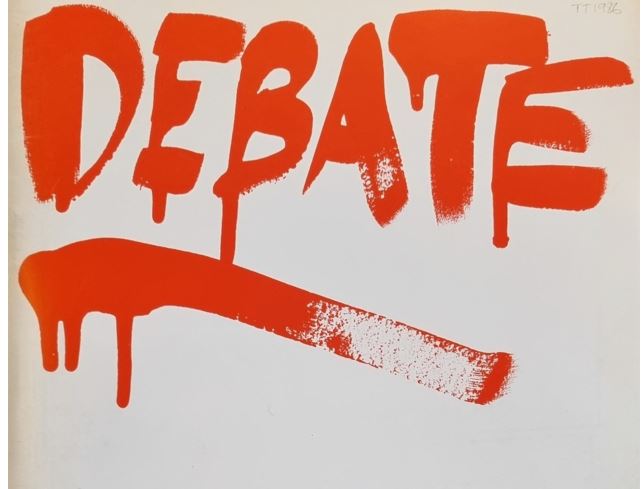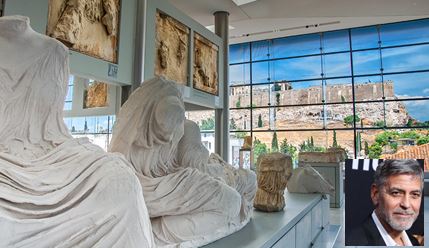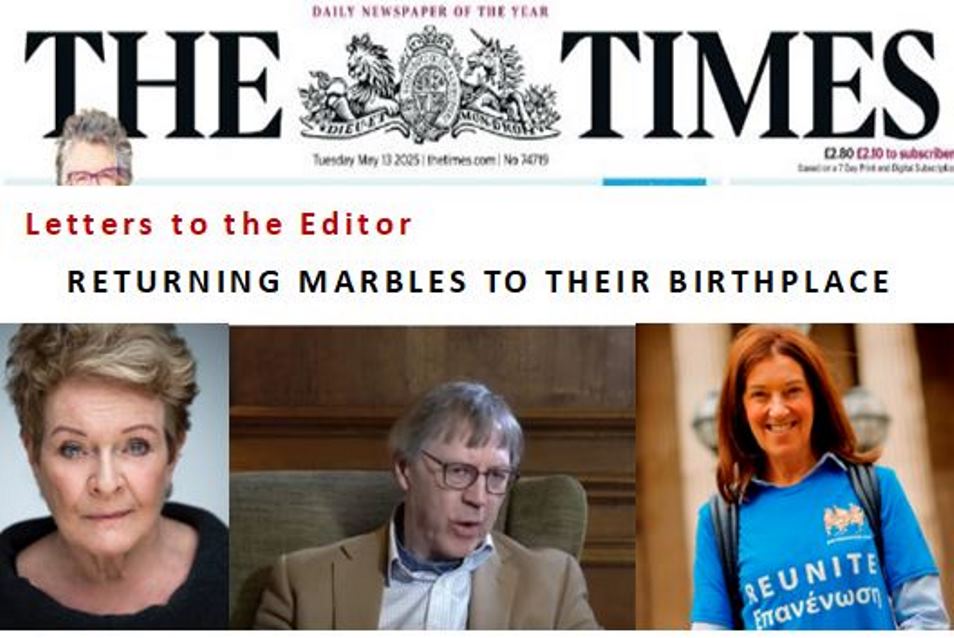Oxford Union Society Magazine, DEBATE, April 1986
Elgin goes to Athens
The President marbles at the Grandeur that was (in) Greece …
On Thursday 12 June Melina Mercouri, the Greek Minister of Culture, is coming to the Oxford Union. Her subject, thanks to dynamic lobbying has a ring of familiarity all around the world: the return of the Elgin Marbles. Powerful forces will cause her to fly to Britain. They are on the one hand the passionate national feeling of the Greek people, and on the other the sophistry and intransigence of the British Government. And caught between these forces is, not a sack of old balls, but the supreme artistic treasure of the ancient world. The debate on 12 June will mark the climax of a renewed campaign by the Greek government to restore to Greece the sculptural embodiment of the spirit of the nation. The vote in Oxford - the centre of British Classical scholarship - will without question affect the decision in Whitehall. To put it crudely, your choice will count.
The background
In 450 BC Pericles, the ruler who steered Athens to her greatness, launched an ambitious programme of monumental public works. The Acropolis, the ancient citadel of Athens, was to become the glory and envy of the world. Puritan spirits objected, claiming that he was wrongfully using tribute from Athenian dependencies to ‘tart up the city like a whore'. But posterity has faulted their judgement. The craftsmen Phidias, Ictinus and Callicrates, with the personal encouragement of Pericles, created buildings and sculpture which are wholly emblematic of the pride and intellectual vigour of Athens. It is on the Panathenaic frieze, which ran along the wall behind the Parthenon's columns, that we see classical art at its most sublime. The technical control is minute, the features calm and passionless. The detachment and self-control of the figures are in harmony with the Periclean vision: of the city and citizens of the virgin goddess independent, self-reliant, and superior to the common calls of the flesh. The Panathenaic Frieze consisted of 111 panels. 97 survive. 56 of them are in the British Museum.
The Parthenon, the temple of Athena the Virgin, has suffered two major catastrophes in its history. The first was in 1678, when a cunning Turkish general, under siege from the Venetians, decided to use it as a munitions dump - like hiding a tank in a Red Cross tent. But the Venetian general Morosini reached for his gun, like Goering, at the mention of culture, shelled it, and blew up most of the central portion. The second major catastrophe was the wholesale pillage of the ancient shrine by Lord Elgin from 1801 to 1811.
Greece was at this time a tumbledown outpost of the Ottoman Empire. The national identity which Pericles glimpsed, and which has returned so conspicuously in the 20th century, had shimmered and vanished. Lord Elgin was Ambassador to the Sublime Porte, and had left behind him in England a young and skittish wife, with a pampered girl's insatiable desire for presents. It was in the Acropolis that he realised he had found a few things that might amuse here. Manipulating Turkish dependence in Britain for military support, he secured from the Sultan a firman to remove 'qualche pezzi di pietra’ - a few pieces of stone - that happened to be lying about on the Acropolis. Elgin's interpretation of this phrase was liberal to say the least. For ten years a team of labourers, under the direction of a rapacious Italian called Lusieri, sawed and hacked at the sculptures of Phidias. Huge ox-wagons daily lumbered down to the Piraeus laden with their pathetic cargo: Hermes’ Knee is still in Athens. The rest of him is in the British Museum.
It was the near-anarchy of the Ottoman Empire that allowed Elgin to get away with it. ‘Do you mind if I borrow these bits of stone for a while?’ was how he might have put it to the local sergeant, and the man would have shrugged and returned to his harem in the Erechtheum. And yet it was on precisely this point that the Whiteheall mandarins rejected, in 1983, the formal request of the Greek government for the return of the marbles: that ‘transaction had been conducted with the recognised legitimate authorities of the time.’ As it turns out, even this paltry defence is invalid: a letter from Elgin of 1811 reveals that the Turkish authorities denied ‘that the persons who had sold those marbles to him had any right to dispose of them.’
To be fair, Elgin did humanity a service by bagging the sculptures before they could be quarried for the construction of Turkish hovels. He lost a fortune on the enterprise, and his wife, who probably found them too cold and immodest, was not happy with them either. In 1816 he sold them to the British government for £35,000. Therefore it would require an Act of Parliament to hand them back. This, needless to say, seems to be a more or less insuperable brake on the process of return - yet it could be passed in an afternoon. The reasons for taking the marbles were good. The reasons for handing them back are better still.
The Elgin Marbles should leave this northern whisky-drinking guilt-culture, and be displayed where they belong: in a country of bright sunlight and the landscape of Achilles, 'the shadowy mountains and the echoing sea'. They will be housed in a new museum a few hundred yards from the Acropolis. They will be meticulously cared for. They will not, as they were in the British Museum in 1938, be severely damaged by manic washerwomen scrubbing them with copper brushes. Legend tells that the statues of the gods shrieked as they were torn from the Parthenon. It is now almost two centuries since Lord Elgin's deed, and the gods are not mocked.
Boris Johnson
Balliol College, Oxford University
April 1986, Debate, official magazine of the Oxford Union Society
This article was discovered by Yannis Andritsopoulos, UK Correspondent for Ta Nea and published in the paper on Saturday 18 December 2021






Comments powered by CComment